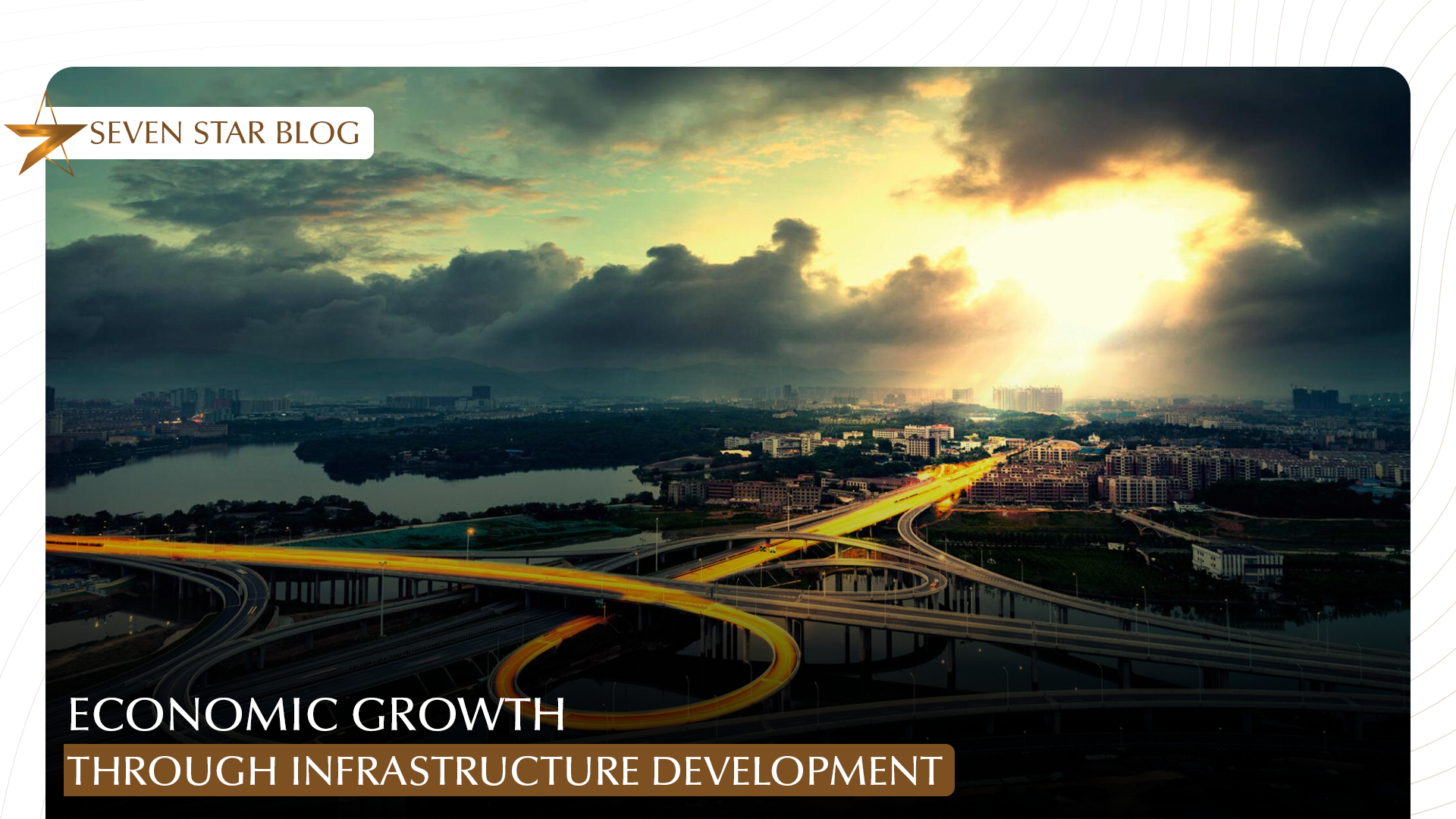Economic Growth Through Infrastructure Development

Infrastructure plays a critical role in supporting the economic growth and prosperity of nations. Infrastructure spending supports economic inclusiveness, enables commerce and connection, and increases productivity and growth.
We urgently need high-quality infrastructure that is sustainable, boosts commercial activity, generates new jobs, reduces income gaps, and empowers women’s participation as the population of developing nations continues to rise.
Road Transport
96% of all freight traffic in Pakistan is handled by highways, which are crucial for transportation. Additionally, there is a clear bias in the government budget toward funding road sector construction and maintenance. In 2010, there were 259,618 km of roads, a 13% increase in length from 1996, of which 179,290 were paved (also known as high type). Over 85% of all road traffic in Pakistan is handled by the network of national roads and motorways, which makes up 4.2% of the country’s whole road system. The N-5 serves as the primary artery and carries 55% of all intercity traffic in Pakistan. The bulk of the nation’s roads and motorways are located in the country’s north-south axis. Approximately 60% of the network is not functioning well. Poor maintenance, overloading vehicles, overinflated truck tires, and the substantial switch from railroads to highways for both passenger and freight transportation are the primary causes of this.

Rail Transport
In terms of long-distance and mass transit of both persons and products, railways have an advantage all around the world. Up until the 1970s, it served as the main form of transportation in Pakistan. Since then, the government’s preference for road transportation over rail has caused its proportion to decrease. Budgetary spending on national highways was PKR 155 billion, but spending on trains was just PKR 45.5 billion from 2005 to 2010. Its proportion of inland transportation has decreased from 41% of freight traffic to 10% of passengers and from 73% to 10% of passengers.
A notable decline in economic activity over the last year, partly due to security concerns, which eventually resulted in lower government income. In addition, a scarcity of operational locomotives has resulted from the failure to get replacement components. A large portion of the rolling stock damaged in the riots in December 2007 is still unrepaired. Slow corporatization and a decrease in Public Sector Disbursement Program payments have been the primary causes of this delay. Many of the engines that were recently purchased from China are also having maintenance problems, which is causing many routes to close.

Aviation
318,652 million tons of freight and over 14 million passengers were handled by Pakistan’s 35 airports in 2007–2008. The busiest airport is Jinnah International Airport in Karachi, although there is also a lot of traffic going both ways at the airports in Lahore and Islamabad.
Both freight and passenger traffic have decreased as compared to 2005–2006. There has been a 0.4 million drop in overall passenger traffic and a 347,674 million to 318,652-million-ton decrease in freight traffic. The majority of this may be ascribed to the decline in domestic traffic brought on by the unfavourable circumstances surrounding the economy, political unrest, and law and order.
The government’s tight ties to the state-owned Pakistan International Carriers (PIA) and the unfavourable conditions facing other local carriers are also blamed for this, in addition to poor management. In the aviation industry, PIA holds a 73% share of the passenger traffic and almost all of the freight market. There are a lot of flights operating on international routes to the UK and the Middle East. The primary source of demand for these routes is overseas Pakistani labourers. International connections are still often slow and irregular.

Sanitation and Water
The physical infrastructure’s coverage and quality are incredibly uneven; the impoverished pay extortionate fees to water sellers and are left out and disadvantaged. According to current estimates, 85% and 65% of metropolitan areas have access to water and sanitation services, respectively, however, the veracity of these figures is frequently called into doubt.
Another major problem is service delivery management. A significant shortcoming in this context has been the inability of local governments to raise sufficient revenue for the upkeep and management of current networks. The lack of incentives for better operations and management (O&M) and the accelerated deterioration of assets are commonplace. Local governments rely on support from the federal and provincial governments for large-scale initiatives. At 0.25% of GDP, public sector investment in the industry is quite little. Despite the government’s support and interest in the private sector, its engagement has been minimal.

FAQs
- What role does infrastructure play in economic expansion?
Answer: Infrastructure spending supports economic inclusiveness, enables commerce and connection, and increases productivity and growth.
- What issues does Pakistan’s infrastructure have?
Answer: Pakistan’s relatively low level of infrastructure in comparison to other countries has had a detrimental impact on the lives of its people. The standard of living is being negatively impacted by power outages, inadequate water and sanitation facilities, and, most importantly, an alarming rise in the population.
- How may Pakistan’s infrastructure be made better?
Answer: Development of Infrastructure: Pakistan must give top priority to building out its energy, digital, and transportation infrastructure. These expenditures have the potential to lower logistical costs, draw in investment, and increase production.
- Which aspects of Pakistan’s infrastructure for commerce require enhancement?
Answer: Pakistan’s economy and the improvement of living standards in general depend on increasing the quality and coverage of services in the areas of power, water supply, sewage treatment, transportation, and logistics.
Answer: Investing in infrastructure may boost broad macroeconomic indicators like the GDP and employment rate. However, because they take a while to begin, infrastructure projects aren’t always able to offer stimulus quickly enough to aid in a recession.
Conclusion
Because foreign savings finance the borrowing used to increase investment, with a 1.3% growth in the overall long run, financing the 4% increase in the public infrastructure investment-to-GDP ratio by an increase in international borrowing results in a higher real GDP growth right from the start. When breaking down GDP components, it is predicted that total investment and household spending will increase by 3.4% and 1.2%, respectively, over the long term.
